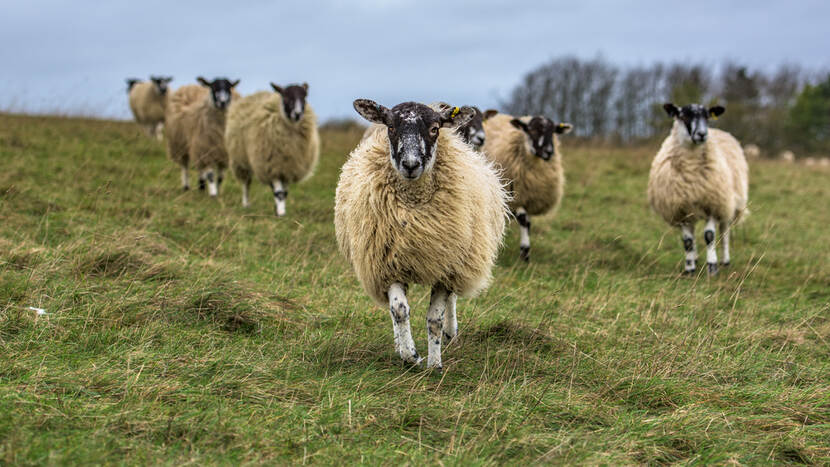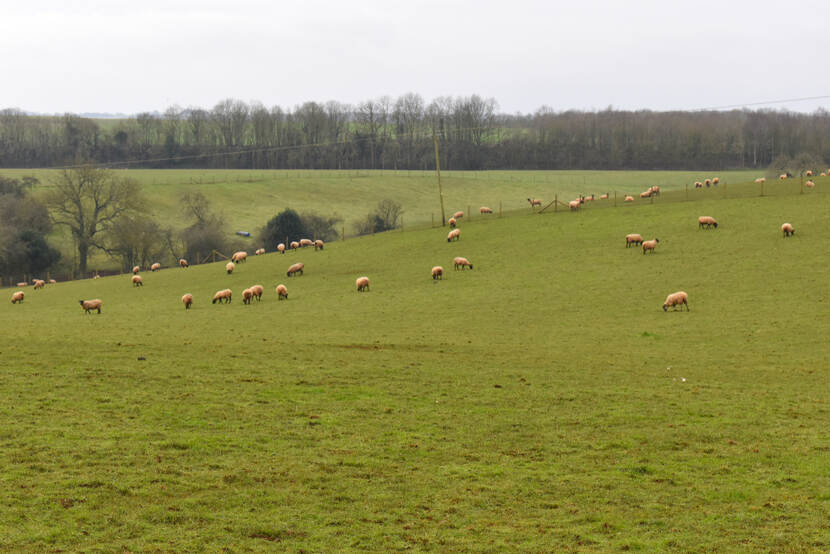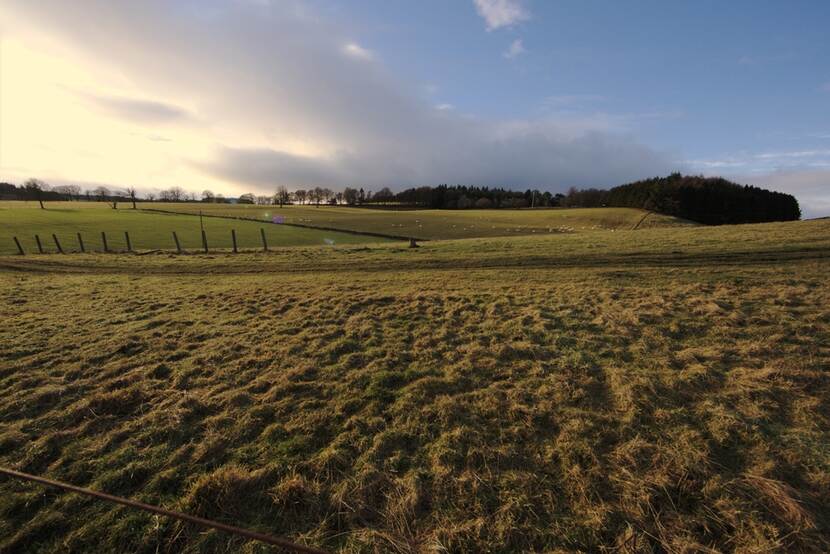The UK’s groundswell of regenerative agriculture
Farming in England is undergoing a significant transformation as it moves away from the agricultural policy it inherited from its membership of the European Union. The traditional area-based subsidies that have long supported the agricultural sector will be phased out by 2028, making way for new schemes that prioritize sustainable and nature-friendly land use. This transition represents a paradigm shift in the way farmers and land managers are incentivized and rewarded, as they will now be paid based on the principle of providing public goods for public money. With the utilized agricultural area covering 71% of the UK's total land, farmers play a pivotal role in addressing climate change and enhancing biodiversity.

The UK is one of the world’s most nature-depleted countries. Centuries of farming, building and industry, have had a significant impact on the landscape and on habitats and the wildlife they support. For example, in the last fifty years the number of farmland birds in the UK have declined by more than 50%. The UK only has 50.3% of its natural biodiversity left, significantly below the global average of 75%.
The UK government has set out a wide range of targets and ambitions to tackle the twin challenges of climate change and biodiversity loss. To achieve its net zero target by 2050, it aims to reduce agricultural emissions of greenhouse gases by supporting a wide range of resource-efficiency and land management measures, from precision feeding and the use of methane-suppressing feed products, to the introduction of silvoarable agroforestry systems. As part of its plan to improve the environment and halt biodiversity loss by 2030, the government provides increased advice and incentives to support farmers to adopt nature-friendly farming practices in 70% of the English countryside.
The Sustainable Farming Incentive
In England, the government has started to roll out and gradually expand a new payment scheme, the Sustainable Farming Incentive, which pays farmers for environmentally beneficial actions beyond minimum legal requirements. The focus of the scheme is not just protecting but improving the environment. The Incentive will reward actions like increasing organic soil matter through for example cover crops, reducing bare ground and tillage, planting hedgerow trees and creating flower-rich grass areas on the edge of fields.
The leading focus of the Sustainable Farming Incentive in its opening phase is on soil health. In England and Wales, almost 4 million hectares of soil are at risk of compaction and over 2 million hectares of soil are at risk of erosion. Intensive agriculture has caused arable soils to lose 40 to 60% of their organic carbon content. Environmental policy has failed to pay attention to soil health in recent decades. But the government seeks to set this right by bringing at least 40% of England’s agricultural soil into sustainable management by 2028, increasing this to up to 60% by 2030. Soil health has become a priority, in recognition that it is key to meeting all environment targets.
‘Farmers face difficult decisions about the future direction of their businesses and feel added financial pressure’
A growing interest in regenerative practices
In recent years, a growing number of farmers in the UK have begun to consider longer-term changes to their farm systems. Many farmers until recently relied on the safety net of the old area-based payments to maintain economically viable businesses. Now, they face difficult decisions about the future direction of their businesses. Higher input costs of the three Fs (fertiliser, feed, and fuel) since 2020, have added significant financial pressure on many farm businesses. The record heat, prolonged dry spells, and wet winters of the recent years, too, have made many farmers consider risk-reducing practices to improve farm resilience.
It is against this background that regenerative practices are increasingly considered as the key solution to the twin challenge of climate change and biodiversity. Regenerative agriculture promises to reduce greenhouse gas emissions, deliver a net-positive impact on nature, while cutting the use of inputs and costs. Research by the Food, Farming and Countryside Commission shows that a shift to regenerative agriculture will result in a net reduction of 66% to 77% of greenhouse gas emissions in the UK.
A growing number of farmers and other businesses in the food chain show interest in learning about regenerative practices – the annual Groundswell Regenerative Farming Festival went from 450 attendees in 2016 to 5,500 in 2022. Farmers are piloting regenerative practices as part of the government’s sustainable farming policy which nudges farmers towards a more regenerative model of agriculture. For example, the government is now offering £55 per hectare for using a companion crop and £45 per hectare for no use of insecticides. Food businesses including Nestlé, McCain, McDonald's and PepsiCo are helping their farmers in the UK change to regenerative practices. The supermarket chain Waitrose is trialling regenerative agriculture on its own showcase farm.
Regenerative agriculture
Regenerative agriculture can be best understood as a mindset of working with natural systems and going beyond sustainability by enhancing ecosystem processes and using fewer external inputs. As an ethos it is easy to understand which contributes to its appeal. Regenerative agriculture seeks to protect the soil – by minimising soil disturbance, keeping living roots in the soil and keeping the soil covered – maximise crop diversity, and integrate livestock. Regenerative agriculture promotes decades long tested conservation farming practices: low- or no-till, crop rotation, cover cropping, and composting. Regenerative practices also promise to make harvest more resilient and reliable in the long term.

Higher food prices and less crops
Yet, there are also real challenges to adopting regenerative practices. For example, large-scale crops like sugar beet and potatoes require extensive soil preparation, including ploughing. Tenant farmers need to pay rent and can only make slow incremental changes if they want to maintain a financially viable business. There is also the need to invest in soil monitoring as there is a generally insufficient on-farm data on soil health. Moreover, there is no certainty about what regenerative farming is and how to best implement it. To its detractors, regenerative farming risks greenwashing in the absence of a clear definition, agreed standards, and data to verify progress towards outcomes.
The large-scale uptake of regenerative agriculture also raises political questions. The Food, Farming and Countryside Commission found that under a regenerative system the UK yield of cereal crops per hectare would be 27% less than with the current conventional system. The prospect of less crops has many worried in a country that already experiences rampant food inflation. An increased adoption of regenerative practices will likely increase food prices and impact food security, in particular for those with lower incomes in the absence of further government protection.

Long-term success requires commitment
Nevertheless, there are signs that regenerative farming is not another buzzword that will soon fade into memory. Many farmers have already practiced forms of regenerative farming for years. But long-term environmental and climate outcomes will require commitment and support from the government and partners in the supply chain, including consumers. It will also require continued investment in data collection and research to build confidence that regenerative agriculture is delivering the long-term climate and environmental outcomes.
Above all, if we want to see a general uptake of regenerative and other nature-friendly farming practices, farmers need room to figure out what works best for their specific conditions. The ethos may be simple to grasp. In practice, however, it is difficult to get the balance right. There are no hard and fast rules, which is both the strength and weakness of regenerative farming. To its critics, it risks greenwashing. To its advocates, the absence of a strict set of standards and definition precisely allows for a real expansive transformation of the way we produce our food.
Seminar: Scaling up regenerative outcomes; tackling the challenges to mobilize change
In May 2023 the Netherlands Embassy in London held a seminar on regenerative agriculture together with LEAF (Linking the Environment And Farming). You can find a report about the seminar here.
Contact
Would you like to know more about the current developments in the domain of agriculture and nature in the United Kingdom or contact the agricultural team at the Netherlands Embassy in London?
You can visit the country page of the United Kingdom at the website agroberichtenlandbuitenland.nl of the Netherlands ministry of Agriculture, Nature and Food Quality. You can also send an email to LON-lnv@minbuza.nl
This article is part of the latest edition of e-magazine Agrospecial (June 2023) about nature-inclusive farming. The teams of our Netherlands Agricultural Network showcase nature-inclusive practices and initiatives in 36 countries worldwide. They delve into the development, benefits and challenges of this innovative farming approach. Each team has a different story to tell. Click here to read more about insights into the potential of nature-inclusive farming practices worldwide!